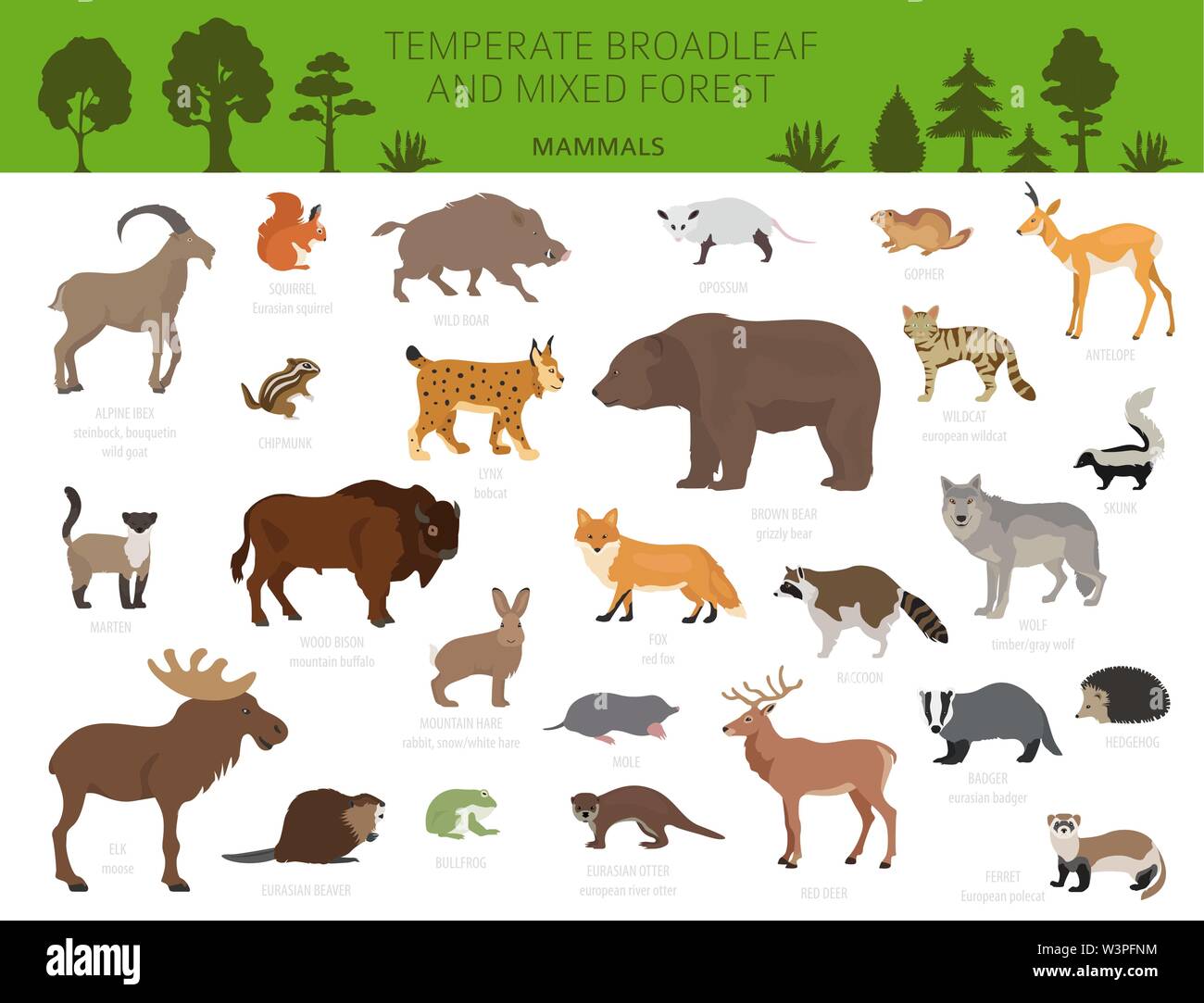Topic food web in rainforest ecosystem: Discover the intricate food web in rainforest ecosystems, where every organism plays a vital role in maintaining biodiversity and ecological balance.
Table of Content
- What are the different parts of the food web in a rainforest ecosystem?
- Overview of the Rainforest Ecosystem
- Key Components of the Rainforest Food Web
- Primary Producers: The Foundation of the Food Web
- Primary Consumers: Herbivores of the Rainforest
- Secondary and Tertiary Consumers: Carnivores and Omnivores
- Decomposers: Essential for Nutrient Cycling
- YOUTUBE: Rainforest Food Chain and Food Webs
- Unique Features of Rainforest Food Webs
- Threats to the Rainforest Food Web and Conservation Efforts
- Case Studies: Specific Rainforest Food Webs
- Implications of Human Activities on Rainforest Food Webs
What are the different parts of the food web in a rainforest ecosystem?
In a rainforest ecosystem, the food web consists of various interconnected parts that help maintain balance and sustainability. These parts include:
- Producers: These are the foundation of the food web and include trees, shrubs, and bromeliads. They use sunlight to produce energy through photosynthesis.
- Primary consumers: These are herbivores that feed on the producers. Examples in the rainforest can include agoutis, grasshoppers, and other insects.
- Secondary consumers: These are carnivores that feed on the primary consumers. They can be snakes, birds, or mammals. For example, a snake might feed on a grasshopper.
- Tertiary consumers: These are predators at the top of the food chain. They feed on other carnivores. In a rainforest, this can include large cats like jaguars or birds of prey like eagles.
- Decomposers: Decomposers play a crucial role in breaking down organic matter and recycling nutrients. Examples in the rainforest include fungi, bacteria, and insects like termites. They help return essential nutrients to the soil for the producers to use again.
In a rainforest ecosystem, all these parts work together to create a complex and interconnected web of energy flow and nutrient cycling. Each organism plays a specific role in maintaining the balance and health of the ecosystem.
READ MORE:
Overview of the Rainforest Ecosystem
Rainforests are among the most vibrant and complex ecosystems on Earth, teeming with a diverse array of flora and fauna. These ecosystems are characterized by high rainfall, dense canopy layers, and a warm climate throughout the year. Rainforests play a crucial role in the Earth"s environmental health, including carbon dioxide absorption, oxygen production, and serving as a habitat for over half of the world"s species.
- High Biodiversity: Rainforests are home to an astonishing variety of species, many of which are found nowhere else on the planet.
- Dense Canopy: The canopy layer, made up of the upper parts of trees, absorbs the majority of sunlight, creating a unique environment below.
- Multiple Layers: Including the emergent, canopy, understory, and forest floor, each layer supports different types of plants and animals.
- Climate Regulation: By producing rainfall and moderating temperatures, rainforests significantly influence global and regional climates.
- Water Cycle: They play a key role in the water cycle by absorbing rainfall and then releasing it back into the atmosphere through transpiration.
Rainforests are not just critical for the species that reside within them; they are vital for the global community, influencing weather patterns, and supporting human livelihoods through resources such as timber, medicine, and food. The intricate food web found in these ecosystems highlights the interdependence of organisms, from the smallest decomposer to the top predators.
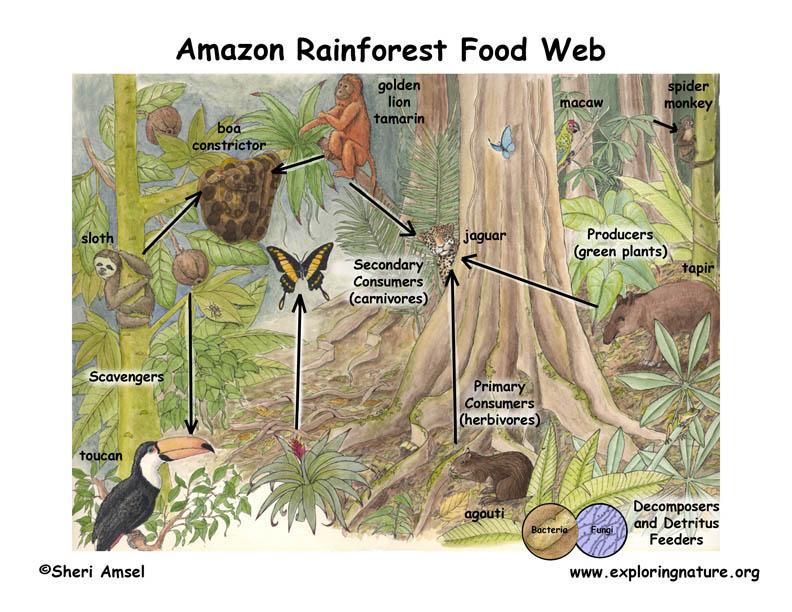
Key Components of the Rainforest Food Web
The food web in a rainforest ecosystem is a complex network of interactions among organisms that is essential for nutrient cycling and energy flow. Understanding the key components of this web is crucial to appreciating the balance and interdependence found in rainforest ecosystems.
- Primary Producers: These are mainly green plants and trees that produce energy through photosynthesis. They form the base of the food web, supporting all other life forms.
- Primary Consumers: Herbivores that feed directly on primary producers. They include insects, birds, and mammals that eat leaves, fruits, and other plant materials.
- Secondary Consumers: Carnivores that prey on primary consumers. This group includes small predators like frogs and large predators such as snakes and jaguars.
- Tertiary Consumers: These are apex predators that are at the top of the food chain, feeding on both primary and secondary consumers. Eagles and big cats are examples of tertiary consumers.
- Decomposers: Organisms such as fungi and bacteria that break down dead material, returning nutrients to the soil and completing the cycle of matter.
Each component plays a pivotal role in maintaining the ecosystem"s health and stability. The diversity of life forms within these categories ensures resilience and adaptability of the ecosystem to environmental changes. The food web in rainforest ecosystems exemplifies the intricate connections that sustain the rich biodiversity characteristic of these environments.
Primary Producers: The Foundation of the Food Web
Primary producers, or autotrophs, are the cornerstone of the rainforest ecosystem"s food web, capturing solar energy and converting it into chemical energy through photosynthesis. This process forms the base of the food web, supporting all other organisms in the ecosystem.
- Trees and Large Plants: The towering trees and vast expanses of foliage in rainforests are the most visible primary producers. They create the dense canopy and understorey layers that are characteristic of these ecosystems.
- Understory Shrubs and Herbs: These plants thrive in the filtered light beneath the canopy, playing a crucial role in providing food and habitat for numerous species.
- Epiphytes and Climbers: Plants like orchids and vines that grow on the surfaces of trees, exploiting the higher layers of the forest to access sunlight.
- Algae and Mosses: Found on the forest floor and on the surfaces of trees, these primary producers contribute to the biodiversity and complexity of the ecosystem.
Together, these primary producers not only form the basis of the food web by providing energy for consumers but also create the structural framework of the rainforest. Their role is indispensable for carbon sequestration, oxygen production, and as the habitat foundation for the vast biodiversity within rainforest ecosystems.
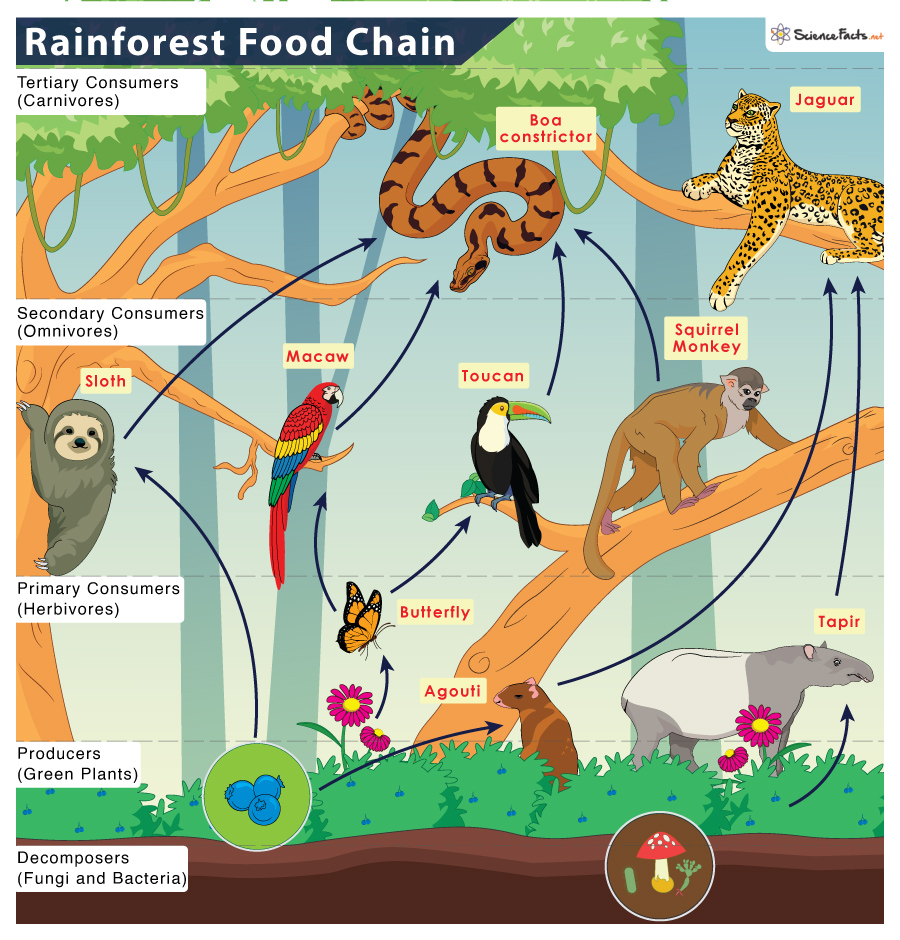
Primary Consumers: Herbivores of the Rainforest
Primary consumers in the rainforest play a crucial role in the food web, serving as the link between the energy produced by primary producers and the rest of the ecosystem. These herbivores range from small insects to large mammals, each adapted to feed on the diverse plant life found in rainforests.
- Insects: A vast array of insects, including caterpillars, beetles, and leaf-cutting ants, feed on leaves, nectar, and plant sap, playing a key role in pollination and seed dispersion.
- Arthropods: Larger arthropods like spiders and millipedes contribute to controlling insect populations and decomposing organic matter.
- Birds: Many bird species, such as parrots and toucans, feed on fruits, nuts, and seeds, aiding in the dispersal of plant species.
- Mammals: Herbivorous mammals like sloths, agoutis, and tapirs consume a variety of plant materials, from leaves and fruits to nuts and bark.
These primary consumers are essential for transferring energy from plants to higher trophic levels, including predators and decomposers. Their feeding habits also facilitate plant reproduction and genetic diversity through pollination and seed dispersal, underpinning the dynamic equilibrium of the rainforest ecosystem.
Secondary and Tertiary Consumers: Carnivores and Omnivores
Secondary and tertiary consumers play critical roles in the rainforest food web, maintaining the balance by controlling the population of primary consumers and ensuring energy flow through the ecosystem. These consumers include a diverse array of carnivores and omnivores that feed on other animals and occasionally on plants.
- Small Predators: Insects and small mammals like tree frogs, snakes, and certain bird species that feed on insects and smaller animals.
- Large Carnivores: Apex predators such as jaguars, leopards, and crocodiles that hunt larger prey within the rainforest.
- Omnivores: Species like monkeys, certain birds, and bears that have a varied diet consisting of both plant material and animals.
- Scavengers: Animals like vultures and certain insect species that feed on dead animals, playing a crucial role in nutrient recycling.
These carnivores and omnivores are essential for maintaining the health of the rainforest ecosystem by preventing any single species from dominating and by aiding in the decomposition process, which recycles nutrients back into the soil. Their presence ensures the stability and sustainability of the food web, supporting the rich biodiversity characteristic of rainforest ecosystems.
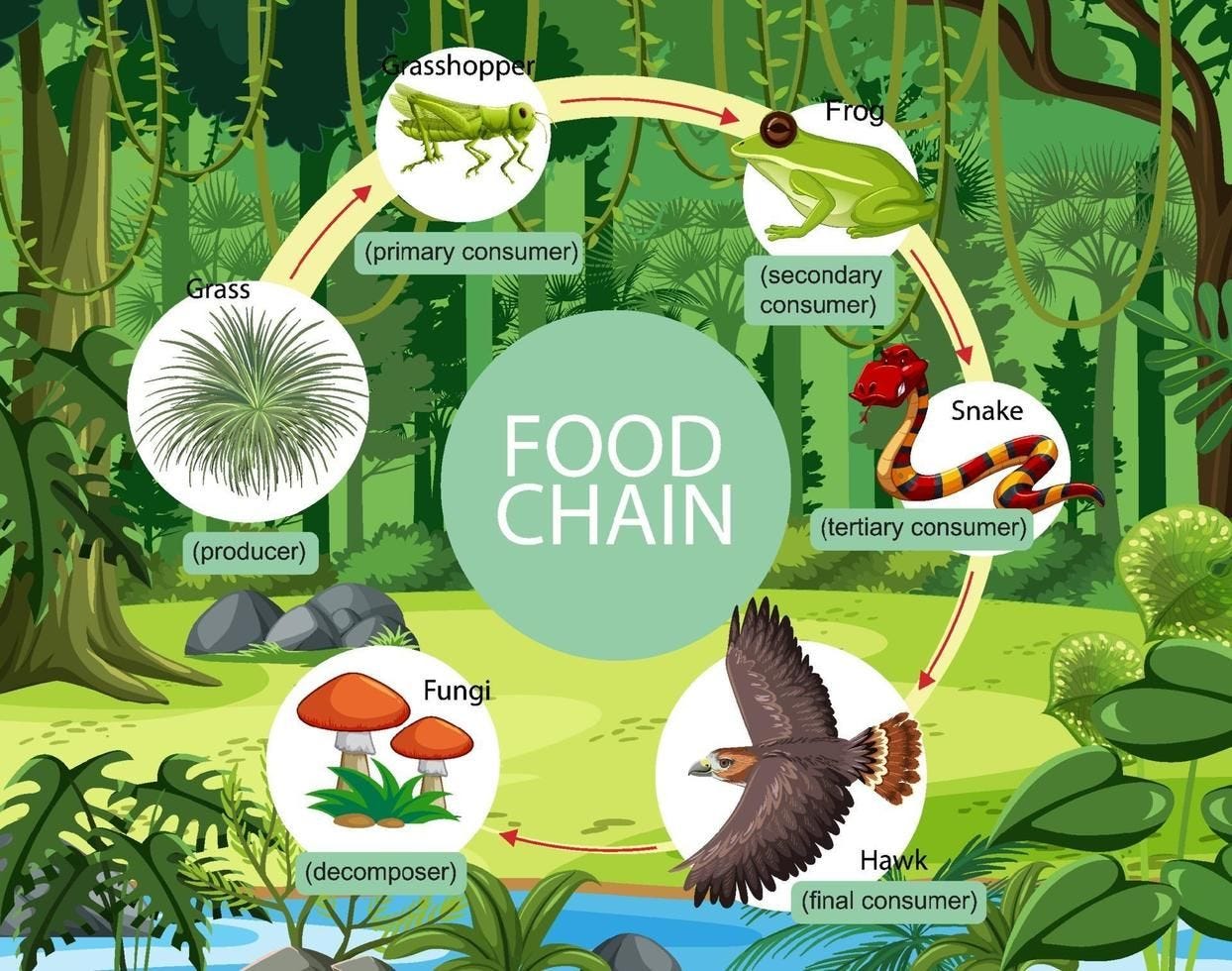
Decomposers: Essential for Nutrient Cycling
Decomposers are the unsung heroes of the rainforest ecosystem, playing a pivotal role in nutrient cycling and energy flow. These organisms break down dead plant and animal matter, converting it into forms that can be reused by primary producers, thus closing the loop of the food web.
- Fungi: Mushrooms and other fungi break down complex organic materials, such as wood and leaf litter, making nutrients available to plant roots.
- Bacteria: These microorganisms decompose a wide range of organic matter, from plant residues to animal carcasses, releasing nitrogen, phosphorus, and other essential nutrients.
- Detritivores: Small animals like earthworms, termites, and beetles consume dead material, further breaking it down and enriching the soil.
By recycling dead matter, decomposers ensure that nutrients are continuously made available to the living components of the ecosystem, supporting growth and maintaining the health of the rainforest. Without decomposers, ecosystems would be overwhelmed with dead matter, and nutrient cycles would be disrupted, threatening the survival of all organisms within the ecosystem.
Rainforest Food Chain and Food Webs
Delve into the intricate world of the food web in this fascinating video. Explore the complex relationships between plants, animals, and microorganisms that sustain life in various ecosystems. Gain a deeper understanding of how each organism plays a crucial role in maintaining the balance and harmony of our planet\'s fragile food chains.
Rainforest Food Chain and Food Webs
Delve into the intricate world of the food web in this fascinating video. Explore the complex relationships between plants, animals, and microorganisms that sustain life in various ecosystems. Gain a deeper understanding of how each organism plays a crucial role in maintaining the balance and harmony of our planet\'s fragile food chains.
Unique Features of Rainforest Food Webs
Rainforest food webs exhibit several unique features that differentiate them from other ecosystems. These characteristics contribute to the high level of biodiversity and complexity found in rainforests.
- High Biodiversity: Rainforests contain a vast number of species, many of which are involved in specialized feeding relationships. This diversity leads to complex food webs with multiple layers and interactions.
- Vertical Stratification: Different species occupy specific layers of the forest, from the forest floor to the canopy, leading to distinct food webs within each layer.
- Co-evolution: The close evolutionary relationships between predators and prey, as well as between plants and their pollinators or seed dispersers, have led to highly specialized interactions.
- Seasonality and Resource Availability: Although rainforests are often thought of as constant environments, seasonal changes can influence food availability and, consequently, the dynamics of food webs.
- Mutualism and Symbiosis: Many rainforest species engage in mutualistic relationships, such as ants and ant plants, where both parties benefit, adding another layer of complexity to the food web.
These features ensure the resilience and stability of rainforest ecosystems but also make them particularly sensitive to changes. Understanding the unique aspects of rainforest food webs is crucial for their conservation and the preservation of their biodiversity.

Threats to the Rainforest Food Web and Conservation Efforts
Rainforest ecosystems face numerous threats that can disrupt their intricate food webs, affecting the biodiversity and health of these vital environments. However, conservation efforts are underway to address these challenges and preserve the rainforest for future generations.
- Deforestation: The removal of trees for timber, agriculture, and urban expansion reduces habitat for many species, leading to loss of biodiversity and disruption of food web dynamics.
- Climate Change: Altered rainfall patterns and temperatures can affect plant growth and species interactions, impacting the entire food web structure.
- Pollution: Chemicals from agriculture and industry can harm the delicate balance of rainforest ecosystems, affecting both water and soil quality.
- Invasive Species: Non-native plants and animals can outcompete local species for resources, leading to shifts in food web compositions and loss of native biodiversity.
Conservation efforts focus on protecting habitats, restoring damaged ecosystems, and promoting sustainable practices. These include establishing protected areas, reforestation projects, and initiatives to reduce greenhouse gas emissions. Education and community involvement are also crucial for the success of conservation efforts, ensuring that local populations can benefit from the rainforest without causing harm. By addressing these threats, we can help preserve the intricate food webs that are essential for the health of rainforest ecosystems.
Case Studies: Specific Rainforest Food Webs
Examining specific rainforest food webs provides insights into the complexity and diversity of these ecosystems. Each case study highlights the unique interactions and adaptations of organisms within their environments.
- Amazon Rainforest: The largest rainforest on Earth, featuring a wide variety of species such as the jaguar, harpy eagle, and piranha, showcasing complex predator-prey relationships and diverse plant-animal interactions.
- Congolese Rainforest: Home to species like the forest elephant and lowland gorilla, this ecosystem emphasizes the role of large herbivores in seed dispersal and the importance of fruit trees in the diet of numerous species.
- Southeast Asian Rainforests: Known for the orangutan and the Sumatran tiger, these forests illustrate the impact of arboreal species on the food web and the critical role of apex predators in maintaining ecological balance.
- Australian Rainforests: Featuring unique species such as the cassowary and the tree kangaroo, demonstrating the significance of birds and marsupials in seed dispersal and the intricate web of life in more isolated ecosystems.
These case studies reveal the adaptability of rainforest food webs to different geographical and climatic conditions, showcasing the resilience and vulnerability of these ecosystems. Through understanding these specific examples, we can better appreciate the global importance of conserving rainforest habitats and the complex web of life they support.

READ MORE:
Implications of Human Activities on Rainforest Food Webs
Human activities have profound effects on rainforest ecosystems, often altering the delicate balance of food webs that have evolved over millions of years. The impact of these activities can lead to significant changes in the structure and function of rainforest ecosystems.
- Deforestation: Clearing rainforest land for agriculture, logging, and development disrupts habitat, leading to loss of species and fragmentation of the ecosystem, which in turn affects the stability of food webs.
- Climate Change: Global warming affects rainfall patterns and temperatures, altering the growth patterns of plants and availability of resources for primary consumers, thereby impacting the entire food web.
- Pollution: The introduction of pollutants into rainforest ecosystems can poison water sources and soil, affecting both plants and animals within the food web.
- Overexploitation: The hunting and fishing of certain species beyond sustainable levels can lead to their decline or extinction, removing key predators or prey from the food web.
- Introduction of Invasive Species: Non-native species can outcompete native species for resources, leading to shifts in food web dynamics and sometimes the collapse of native populations.
The implications of these human activities are far-reaching, affecting not only the biodiversity and structure of rainforest ecosystems but also the services they provide to humanity, such as carbon sequestration, climate regulation, and sources of medicine. It underscores the need for sustainable management practices and conservation efforts to protect these vital ecosystems and their complex web of life.
Exploring the food web in rainforest ecosystems reveals the intricate balance and interdependence of life. Protecting these vital habitats ensures the survival of our planet"s most diverse and complex communities for future generations.
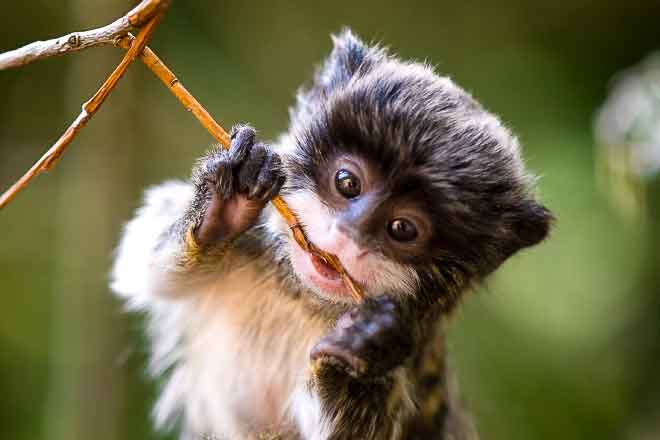

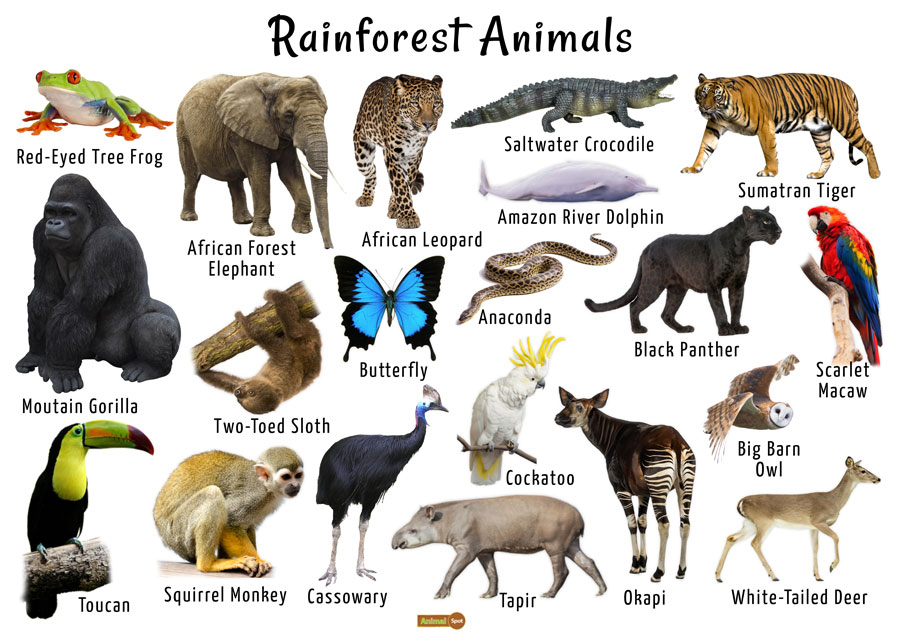
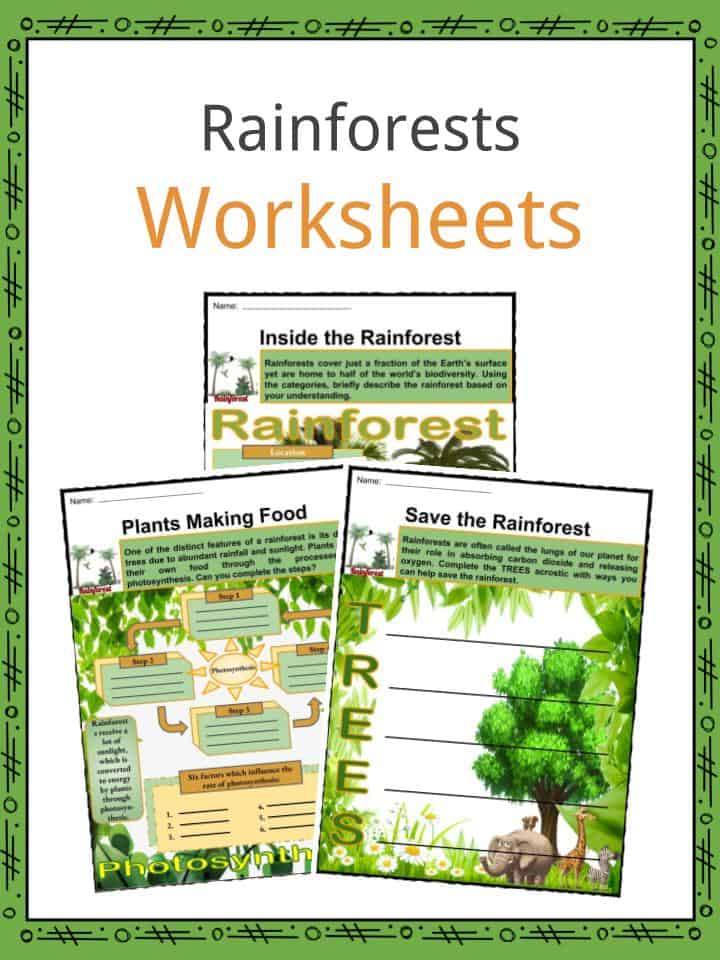



:max_bytes(150000):strip_icc()/497408077-56af61ff3df78cf772c3c309.jpg)




